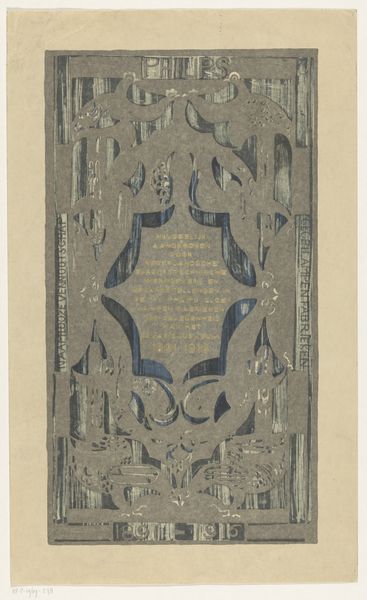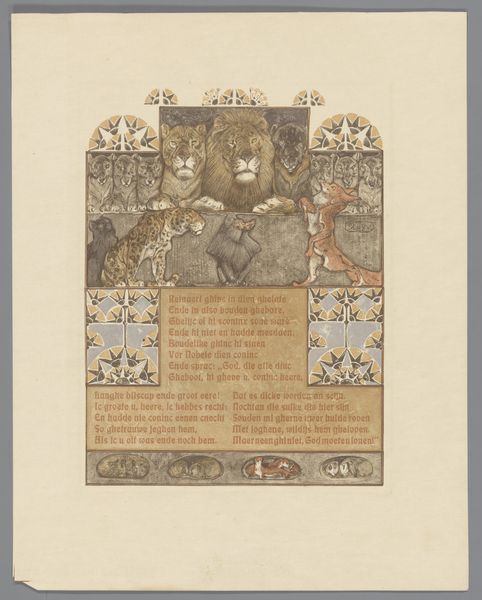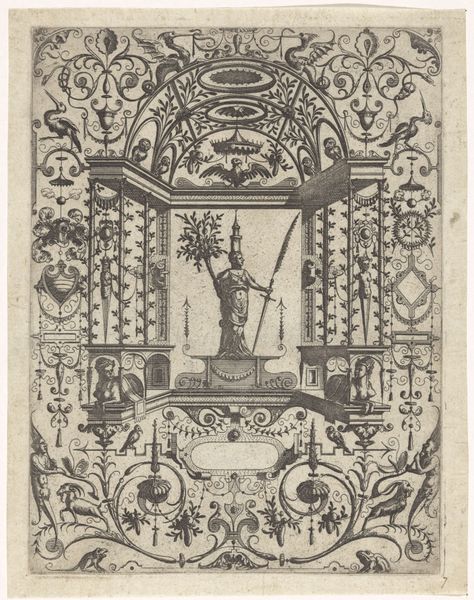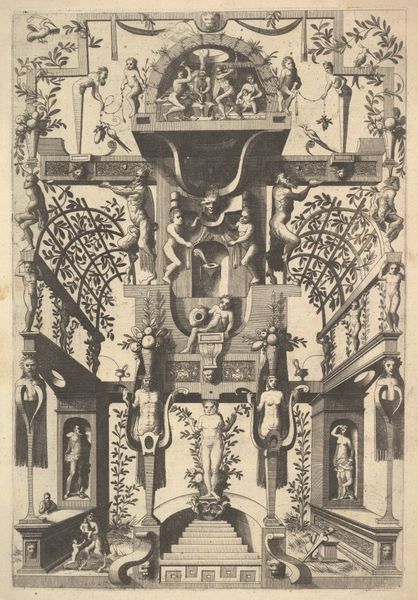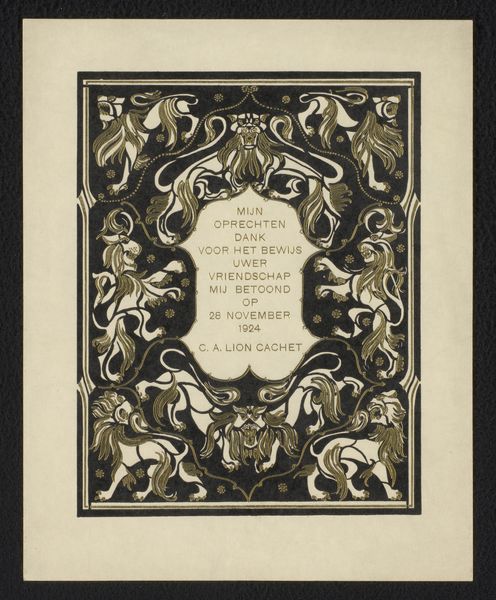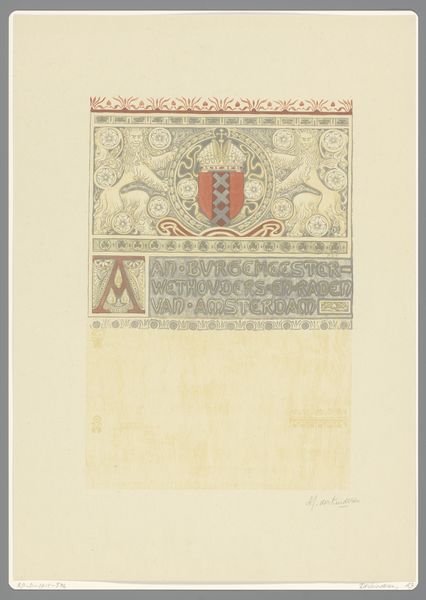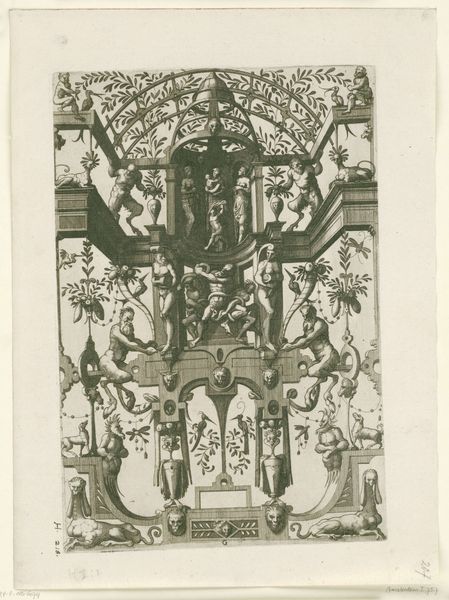
Oorkonde bij de hulde aan Koningin Wilhelmina van de burgerij van Apeldoorn 1898
0:00
0:00
graphic-art, print, woodcut, engraving
#
graphic-art
#
art-nouveau
# print
#
old engraving style
#
landscape
#
historical fashion
#
illustrative and welcoming imagery
#
linocut print
#
woodcut
#
symbolism
#
watercolour illustration
#
engraving
Dimensions: height 635 mm, width 475 mm
Copyright: Rijks Museum: Open Domain
Curator: We're looking at a fascinating print today: "Oorkonde bij de hulde aan Koningin Wilhelmina van de burgerij van Apeldoorn" or "Certificate at the tribute to Queen Wilhelmina by the citizens of Apeldoorn". It comes to us from 1898 and was crafted by Carel Adolph Lion Cachet. It's currently housed in the Rijksmuseum. Editor: Immediately, it strikes me as so…grand. The composition is quite striking, regal even. I like the subtle, muted colors, with all the layered graphic elements. It feels historical, celebratory but a bit solemn at the same time, do you get that? Curator: Definitely solemn, and you’ve honed in on some key qualities. As the title suggests, it was produced to mark a specific historical event. We need to consider its function as a kind of official document reflecting the symbolic presentation by the citizens of Apeldoorn to Wilhelmina upon her inauguration. Note the visual references of Dutch "Arts and Crafts" movement—a distinct feature is the stylized decorative borders and the integration of text and image, showcasing that blending of "high art" and "applied art." Editor: I see it, like a royal tapestry. What are those creatures at the top? Are those deer? And is that her royal cipher woven into everything? Curator: Indeed. The inclusion of deer references Apeldoorn as a historic hunting ground favored by Dutch royalty, including Wilhelmina herself, effectively creating a narrative relationship between sovereign and locale. Also of note is the technique—this work layers multiple graphic art processes including engraving, woodcut, and potentially linocut to build that depth. Editor: Fascinating that they combined these labor-intensive techniques for what essentially was an official decree. And all those densely packed letters! They look as though they were produced en masse, as you pointed out—what would that process be like back then, for a print like this? Curator: Reproducing this design would’ve required specialized workshops. Think of it: skilled engravers carefully carving the text and image onto wood blocks, ensuring each impression would convey respect for Queen Wilhelmina, alongside more functional means of delivering an address from her constituency in the Apeldoorn region. There were most likely social dynamics at play concerning class as well as the presentation of an ideal citizenry that we see here through their crafted and laboured artwork. Editor: Thinking about how many hands would've touched this work...how many steps along the way… I like that—it opens up all these possibilities for further analysis, from materiality to production, which also brings me closer to its initial awe again! Curator: Precisely, seeing its value as more than just royalist decor adds complexity and interest—it serves to challenge notions of art versus production in interesting ways, I believe.
Comments
No comments
Be the first to comment and join the conversation on the ultimate creative platform.
